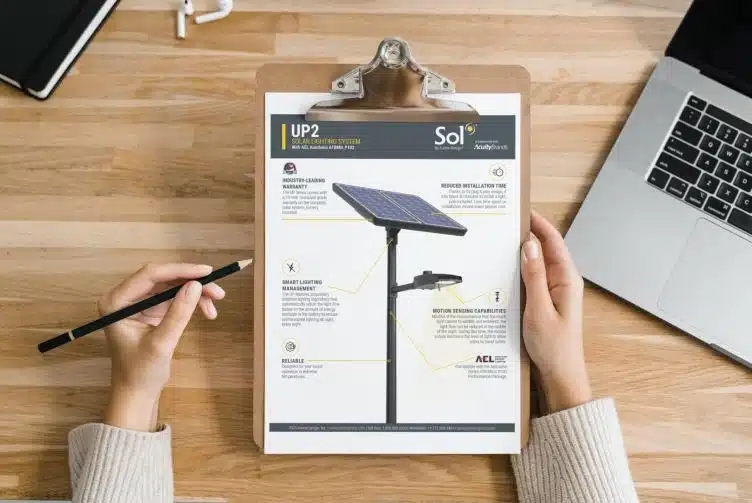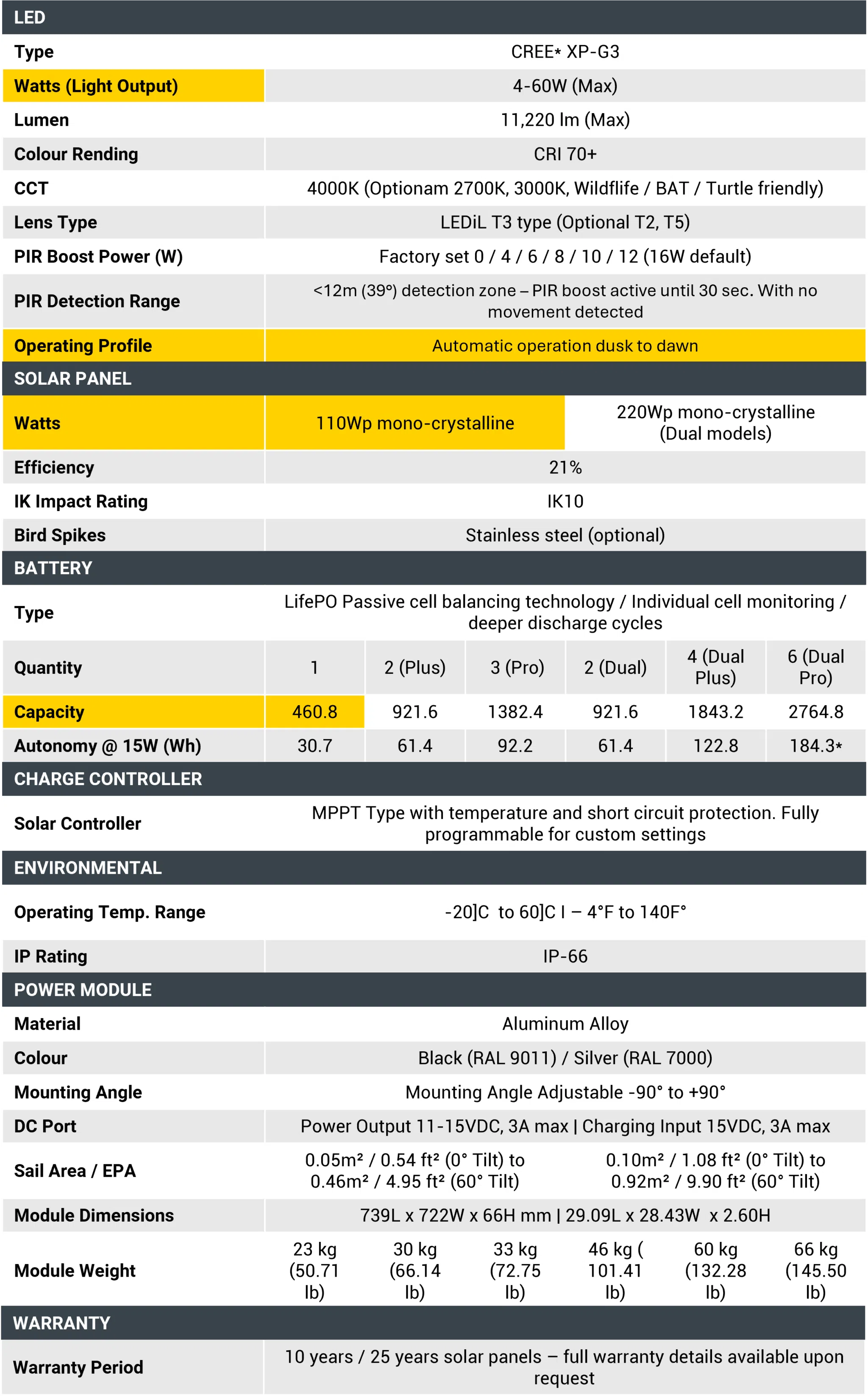So, you've decided to go solar for your next project. That's exciting! But here's the challenge: choosing the right product and manufacturer can be overwhelming.  Shopping for solar lighting isn't like buying an air fryer or a smartwatch. There's no Wirecutter or CNET to guide you. Instead, you're faced with something called a "spec sheet." It might seem intimidating at first, but it's actually a powerful tool when you know how to use it.  A spec sheet is essentially a document that gives all the technical details about a product. It helps you compare different options and understand what makes one product better than another. From warranties to certifications, these sheets contain everything you need to make an informed decision.  But if you don’t know what to look for, it can feel like reading a foreign language. What do all those numbers mean? How do you tell real performance from marketing hype? Don’t worry—we’ve got you covered. Let’s walk through the key elements of a spec sheet and how to use them effectively.   Here's the good news: You don’t need to understand every detail on a spec sheet. Most of the information is highly technical and not always relevant. Focus on the four main pieces of data that determine whether a system will work for your project:   These are the most important numbers to check. If a manufacturer leaves out any of this, it might be a red flag. Always ask questions—especially if the data seems missing or unclear.  Here’s an example of where to find this information on a typical spec sheet:   Once you have these numbers, you can calculate whether the system will meet your energy needs.   To figure out how big your solar panel should be, start by finding the average number of peak sun hours in your location during the worst month. The NREL PVWatts Calculator is a great resource for this.  For example, if your project is in Charlotte, NC, and you get 3.73 peak sun hours in December, multiply that by the panel size in Wp to get the daily charging capacity:  3.73 x 110Wp = 410Wh  This is the maximum energy you can expect to collect each day. However, it’s wise to account for days with less sunlight by using an array-to-load ratio (ALR). A common ratio is 1.2:1, which ensures the system can recover even when solar collection is low:  410 / 1.2 = 341Wh  If you skip this step, your system might fail in winter when solar collection drops.  Pro tip: Reputable manufacturers also apply derating factors to account for real-world conditions like dust, snow, and shade. These aren’t always listed on spec sheets, but they’re worth asking about. If a company doesn’t consider them, their system may not perform as expected.   Now that you know how much energy is available, you need to calculate how much your fixture will consume. Start by finding the longest night of the year using NOAA’s Solar Calculator.  In Charlotte, the longest night is about 14 hours. Next, check the fixture’s output (usually given in watts). For example, if you need 4,500 lumens and the fixture has an efficacy of 150LPW, you’ll need at least a 30W fixture:  4,500 / 150 = 30W  Multiply this by the number of hours to get the daily load:  30W x 14 = 420Wh  This means your solar panels must be able to recharge 420Wh each day. If the max available is only 341Wh, you’ll need to adjust either the fixture or the operating schedule.  A 4D1 profile, for instance, reduces power in the middle of the night, lowering the total energy needed:  30W x 5 = 150Wh  This is well within the 341Wh limit, so the system would work.   Batteries are crucial for ensuring your system lasts through multiple nights without recharging. The type of battery matters too—lead acid vs. lithium, for example.  Lead acid batteries typically have a 25% depth of discharge (DOD), while lithium can go up to 70%. This affects how much usable energy you have:  285Wh x 2 = 570Wh (minimum required for two nights)  If your spec sheet shows a 460.8Wh battery, you’d need two of them to meet the requirement. Be cautious of manufacturers who ignore DOD guidelines—they may sell systems that fail quickly.   Finally, don’t forget to check for other important details like warranty, certifications, and fixture quality. A strong warranty (like Sol’s 10-year coverage) gives you peace of mind. Certifications like IEC or IEEE ensure safety and reliability. And high-quality fixtures from trusted manufacturers like Acuity Brands deliver better light performance and longevity.   Reading a spec sheet doesn’t have to be confusing. With the right knowledge, you can confidently choose a solar lighting system that fits your project’s needs. Whether you're looking for energy efficiency, durability, or cost savings, understanding these documents is the key to making the best choice.  Have questions about spec sheets or anything else? Our team of solar experts is here to help. Contact us today!  Ningbo Actmix produces Biocide-Algaecide Agent Actmix BCM-80GE, Carbendazim is also called the bacteria, benzimidazole 44, it is a kind of high-efficiency, systemic broad-spectrum biocide-algaecide agent, blong to benzimidazole compounds and have stable chemical properties, inside vacuum treatment and protection. It is widely used as biocide-algaecide agent for rubber. Biocide-Algaecide Agent, Bactericidal And Anti-Algae Agent,Pre-dispersed Rubber Biocide-algaecide Agent Ningbo Actmix Rubber Chemicals Co.,Ltd. , https://www.predispersedchemical.comThe info you actually need
Solar panel collection
Fixture output and operating profile
30W x 50% x 9 = 135Wh
Total = 285WhBattery capacity and chemistry
570Wh / 0.7 = 814Wh (with lithium DOD)Other considerations
Wrapping up
Contact us

